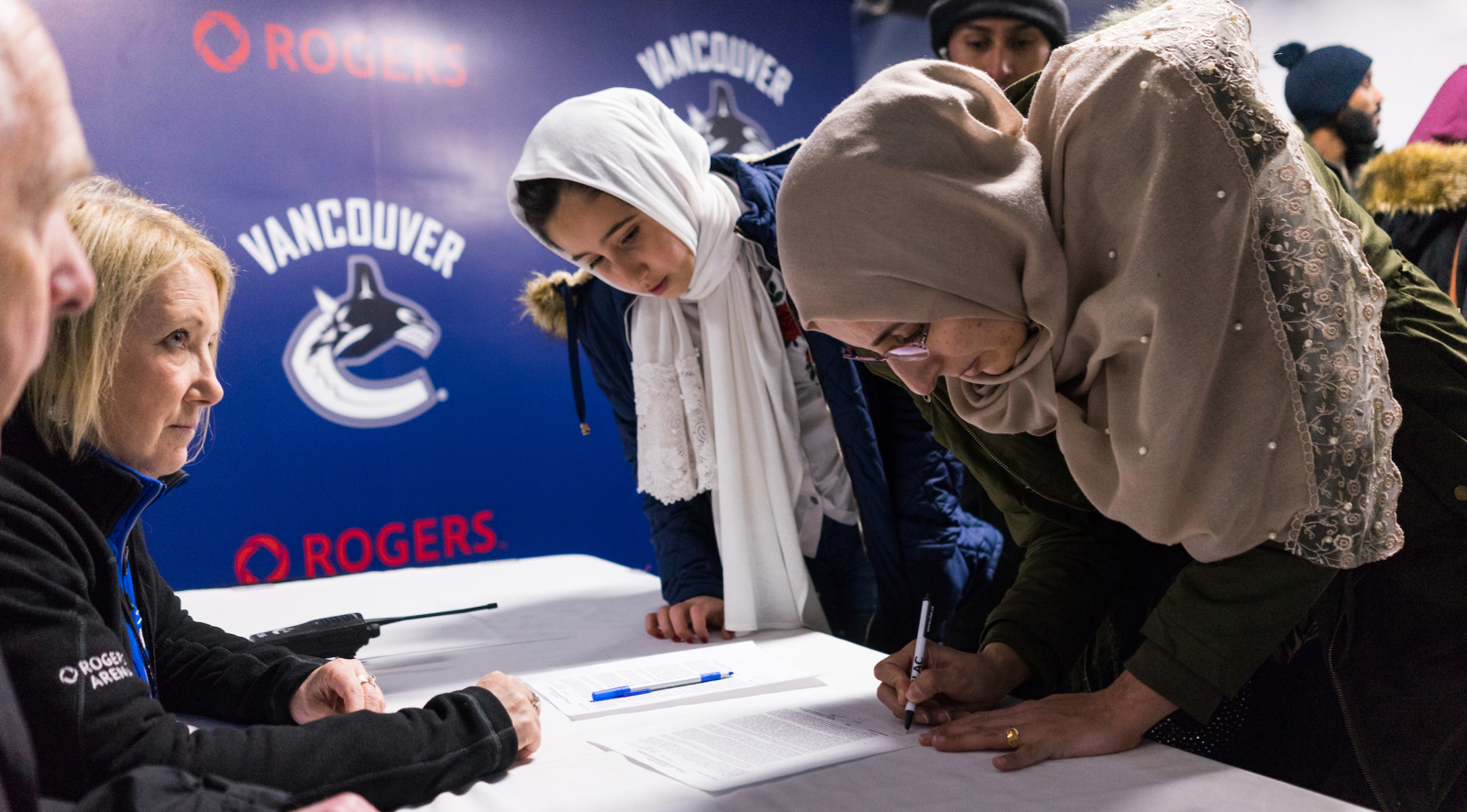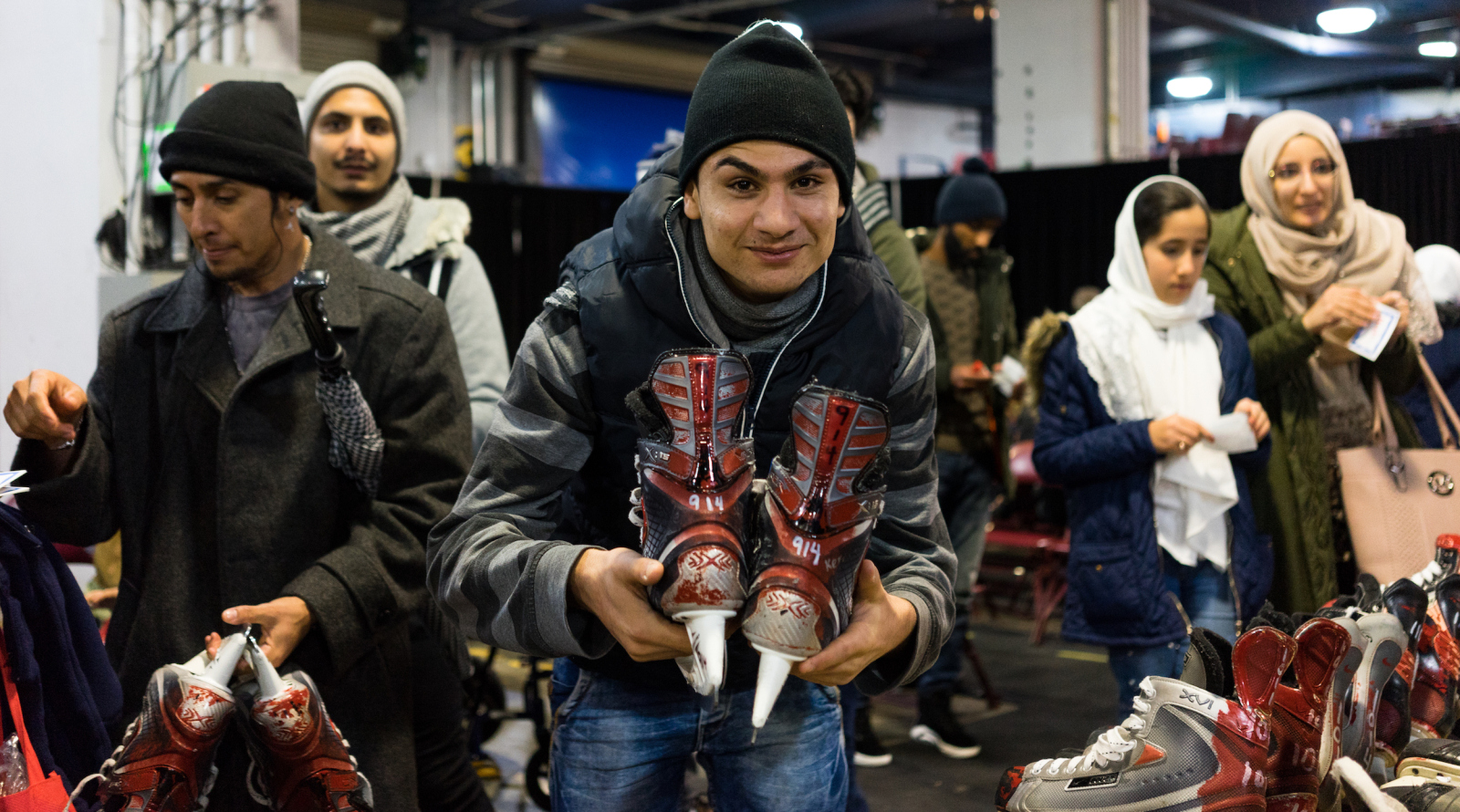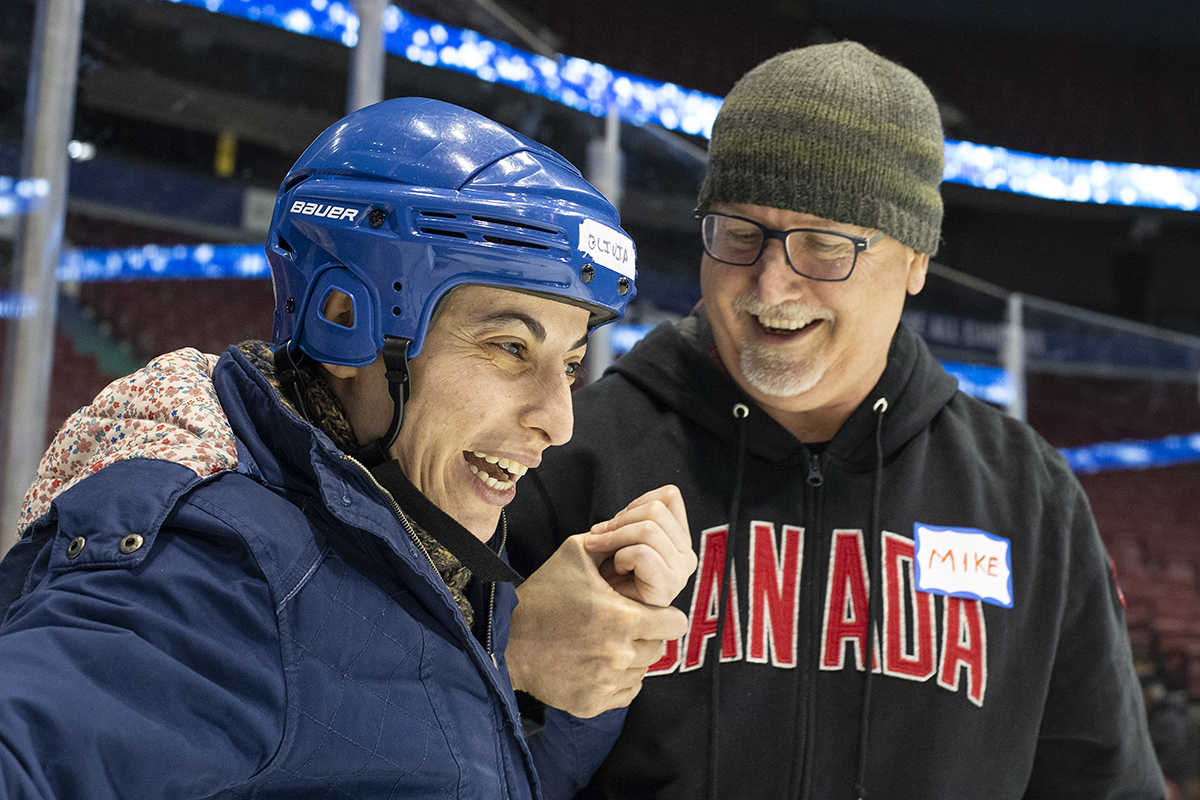A Canadian-style welcome party
Scroll down to continueAt 5:30 on a Friday afternoon the waiting hall at Rogers Arena in Vancouver is empty.
Soon a door opened and there was a blast of voices as dozens of people rushed towards a sign-up desk.

There were 90 women, men and children, all newcomers to Canada, about to try a quintessential Canadian activity: skating for the first time in their lives.
The hall buzzed with excitement and nervousness. Some children laughed. Others hid behind the grownups. A few fell to the floor and cried.
The general mood was one of happiness and togetherness, though. Most of the 90 were refugees from Syria, Honduras, Somalia and Eritrea, and all had been in Canada for less than a year, some for as little as six days.
The atmosphere felt hopeful: perhaps hopeful about starting a new life in Canada. Hopeful of new opportunities. Hopeful that they wouldn’t get too hurt when falling on the ice.
Lacing up
Scroll down to continueThe public skating event was sponsored by Convergence Strategies in support of the Immigration Services Society of British Columbia. The City of Vancouver's parks and recreation staff were on hand to help fit skates and give impromptu lessons to families. It was the third year in a row this event had taken place and this was the largest turnout yet.

The eager and the daring began to tie their skates themselves, braving the possibility of “ankle-skating.” Most had help from volunteers, some of them veteran ice skaters.
I spoke with a young boy who was nervous about being on ice. He told me he would only skate for a short while before leaving the ice out of fear.
I noticed that people were about to step onto the rink, so I grabbed my camera and headed onto the ice to capture their first strides. I was expecting everyone to look like newborn giraffes. But, surprisingly, aside from a few shakes, most were skating with grins from ear to ear.
Rawan
Scroll down to continueI jumped at the opportunity to lace up a pair and hop on the ice myself. That’s when I met Rawan Nahhas, a refugee from Syria.
At 37 years old, she travelled to Canada alone, leaving her country due to war and a fear of ISIS.
“ISIS surrounded my city three times, and I was scared for them to enter. For this reason I came here,” she said.
Nahhas had family in the United States, but she specifically chose to come to Canada. “My brother lives in the U.S., but he recommended I come to Canada because it’s the best country for refugees. He said there is a lot of racism over there,” she said.
Every time I passed Nahhas on the ice she was clutching tightly to someone’s entire body (sometimes even my own) but she was always in a fit of laughter.

“I felt as if I was a small kid because I tried to skate and fell down many times, like a kid when they are trying to walk. And feeling like being a kid again is an awesome feeling!” Nahhas said later in an email exchange.
Nahhas and I bonded over our love of the Olympics. She stated that her love of the games was big “like the size of the sky.” We both expressed adoration for “Canada’s royal couple,” Tessa Virtue and Scott Moir, and their fantastical ice dancing skills.
Nahhas hopes to complete her PhD in biology, but she ultimately wants to work in the field of comparative religion.
Harout
Scroll down to continueAfter a light dinner consisting of pizza, chicken fingers, and fries, everyone was back on the ice.
I noticed a young man clutching the boards to help him skate. He placed one hand over the other as he took weary steps on his blades. His name was Harout Khederlarian, a 26-year-old Armenian who was born in Syria. We sat down on the Vancouver Canucks home bench for a chat.
A dancer in his home country, he told me that he fled to Lebanon when he was drafted into the Syrian army.
“I decided to escape because they were planning to send me to a fighting zone. I don’t want to kill or be killed. I don’t want to carry weapons. Then I escaped to Lebanon,” Khederlarian said.
As he recalled the events of his escape to me — how he travelled on foot and motorcycle for eight hours to reach the Lebanese border — Khederlarian looked through me and asked under his breath: “How did I do it?”
In the six months Khederlarian had been living in Canada he had already gone skydiving. That was his favourite memory so far.
He described Canada as the land of opportunities and was looking to start his own business in the near future.
“I’m a diamond setter. I decided to run my own business and actually sent in a business name request. I’m waiting for the approval," he said.
When I asked him if he had any other goals, dance was what came to mind first. “I just want to join any dance group so I can dance again.”
His favourite style was Armenian cultural dancing.
